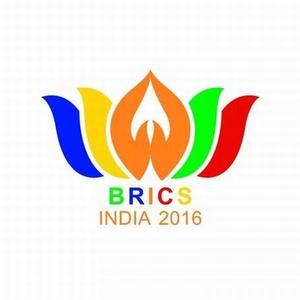A decade after the Foreign Ministers of Brazil, Russia, India and China met for the first time on the sidelines of the UN General Assembly in New York to discuss global challenges (the 2006 War in Lebanon dominated the conversation back then), India will host the eighth annual Summit of the BRICS countries on October 15-16 in Goa. What can we expect?
According to India’s External Affairs Minister Sushma Swaraj, India “will adopt a five-pronged approach during our Chairmanship. It will comprise Institution Building, Implementation, Integration, Innovation, and Continuity with Consolidation,” she said speaking on the occasion. “Building Responsive, Inclusive and Collective Solutions is the core-theme for our BRICS Chairmanship with a special focus on institution-building, implementing past commitments, and exploring innovative solutions in a spirit of continuity with consolidation,” said a Ministry of External Affairs statement.
These statements are fairly generic because new initiatives need to be worked on and agreed on by all five member states before they can be announced at the summit in October.
Three things, however, seem to be clear:
First of all, India, a stellar economic performer compared to the rest of the world, will use the summit to underline its prime status among emerging powers, growing faster than any other major economy. Indeed, the Indian government is very much aware that it is one of the few places on earth that provides hopeful economic data, lending it enormous legitimacy. India’s GDP per capita is just over 10% of US levels, and even far below China’s GDP per capita. That suggests that the room for catch-up is enormous, and India may be one of the main motors of the global economy in the coming decades. Considering lower growth in China and economic disaster in Brazil, Russia and South Africa, India will easily outshine the other participants at the summit. India’s high growth combined with China’s dominant size will make the BRICS an ever more Asia-centric club.
Secondly, while several new initiatives are likely to be proposed in the coming weeks and months, the BRICS summit’s focus will be on consolidating existing institutions. The BRICS-led New Development Bank will announce its first loans next month, so discussions will focus on details regarding the institution’s structure, lending standards and so on. Still, the strikingly broad number of initiatives is set to continue, and the summit’s website provides lots of useful information. According to India’s Ministry of External Relations,
People-to-People interactions, business, youth, and sports will be the key priority areas for our BRICS Chairmanship. The BRICS Under-17 Football Tournament, BRICS Film Festival, BRICS Friendship Cities Conclave, BRICS Wellness Forum, BRICS Trade Fair, BRICS Youth Summit, BRICS Think-Tank Forum, BRICS Academic Council etc. will be hosted during India’s Chairmanship. Participation of people from across the States will be encouraged in various BRICS events during India’s Chairmanship. BRICS events will also be organized in different States across the country.
Finally — and this won’t surprise anyone who has studied the topic — the BRICS grouping has long turned into something far greater than the majority of Western analysts likes to concede, and institutionalization makes its continued existence for years to come extremely likely. While pundits writing articles titled “Forget the BRICS” still believe the main glue between the grouping’s members is high economic growth (and that it should, consequently, cease to exist given today’s lower growth rates), institutionalization has advanced far more than any Western mainstream analysts would have expected. The BRICS Summit is now among the major pillars of the yearly travel schedule of any member country’s President, irrespective of ideological orientation. Indeed, while even those initiatives that make it into the final document are at times uncertain to bear any fruits, all this points to the continued overall trend to expanding, not reducing, intra-BRICS cooperation.
While previous leaders’ meetings have taken place earlier in the year, India’s decision to push back the 8th BRICS all the way to October comes as a blessing to both Brazil and South Africa, as leaders of both countries are under enormous pressure and may not finish their terms that end in 2018 and 2019, respectively. Particularly in Brazil, which teeters on the brink of a constitutional crisis after a judge blocked President Dilma Rousseff’s appointment of ex-President Lula as her chief of staff, a longer international trip by the President seems currently out of question. One may hope that by October, either Rousseff will have overcome the current political crisis, or Michel Temer, Rousseff’s vice-president, will have taken over and stabilized the country’s politics sufficiently to join the debates in Goa.
Read also:
The Ufa Declaration: An analysis
The New Development Bank (NDB): The BRICS grouping promises to go green
IMF reform: A late (and incomplete) diplomatic victory for the BRICS grouping
The BRICS grouping is becoming more Asia-centric
Image credit: MEAIndia









